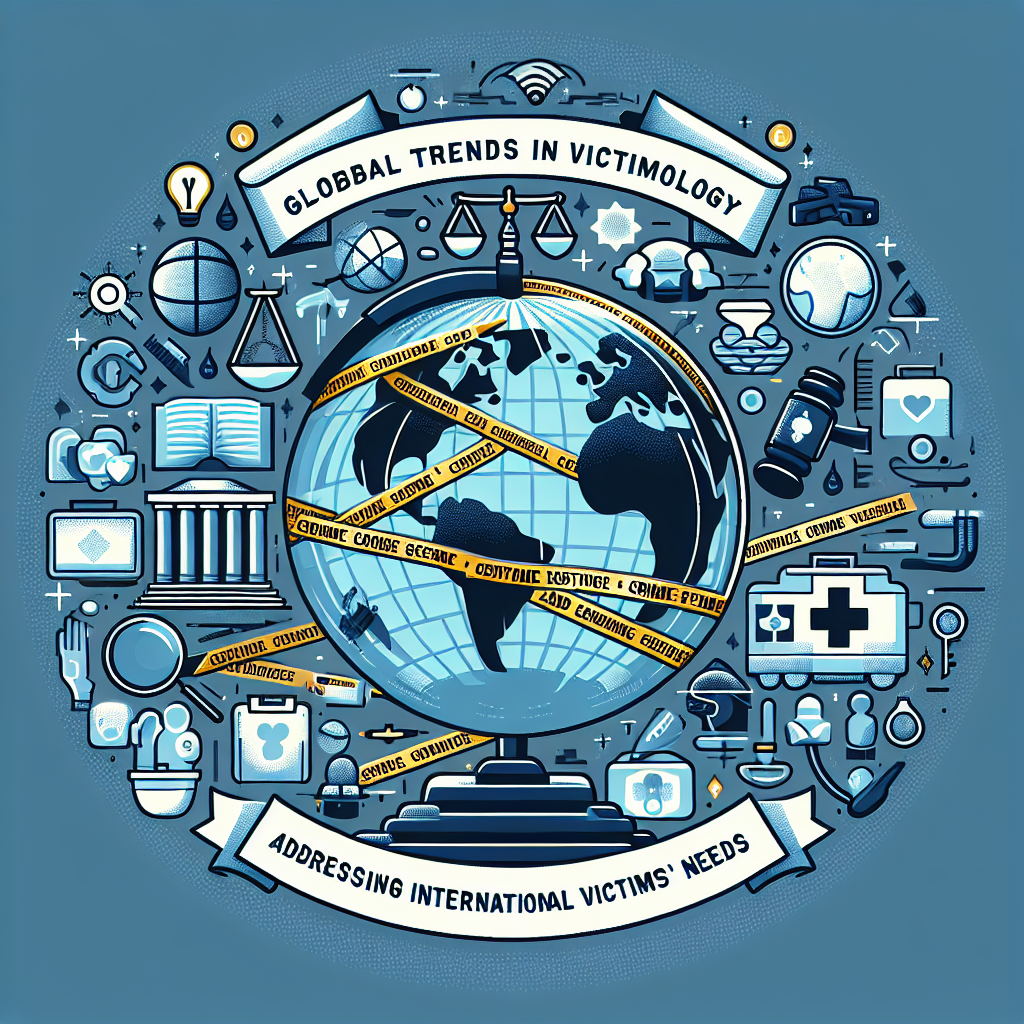
Introduction
In a world that increasingly intertwines across borders, the dynamics of crime and victimization have evolved significantly. The global trends in victimology underscore a pressing need to better understand and address international crime while simultaneously meeting the complex needs of victims. As globalization accelerates, so do the challenges faced by societies in safeguarding their citizens and providing appropriate support for those affected by crime. This article explores the multifaceted landscape of victimology—spotlighting how it adapts to growing international threats and the rising awareness of victims’ rights. As we delve into these crucial global trends, our aim is to empower readers with insights that not only inform but inspire action in the realm of victim support.
Understanding Victimology in a Global Context
Victimology, the study of victims and their relationship to offenders and the criminal justice system, has gained increasing attention in recent years. The global trends in victimology reveal that crime transcends national borders, leading to a need for collaborative approaches to victim assistance.
Defining Victimology
At its core, victimology examines the impact of crime on individuals, communities, and society as a whole. This field looks into the causes of victimization, the emotional and psychological aftermath for victims, and how different cultures perceive victims relative to offenders.
The Shift from Offender-Centric to Victim-Centric Approaches
Traditionally, criminal justice systems have concentrated on the rights of offenders, often neglecting the needs of victims. However, contemporary global trends emphasize a shift toward victim-centric models. This emphasizes prioritizing victims’ needs, enhancing their rights, and involving them more in legal proceedings.
Case Study: The International Criminal Court (ICC)
One prominent example of victim-centered approaches at the international level is the International Criminal Court (ICC). Established to prosecute serious crimes such as genocide and war crimes, the ICC also recognizes the rights of victims.
- Relevance: The ICC allows victims to participate in proceedings, ensuring their voices are heard.
Insights from the ICC
Victims can contribute through testimonies, and their concerns can influence trial outcomes. This model serves as a vital example for countries negotiating their justice systems, making victim engagement an integral part of legal frameworks.
The Impact of Globalization on Crime
With globalization comes complexity. Trade, technology, and migration can lead to new types of crime and victimization. Key global trends in victimology highlight the diverse challenges posed by international crime, including human trafficking, cybercrime, and transnational terrorism.
Human Trafficking: A Global Epidemic
According to the Global Slavery Index, over 40 million people are in modern slavery globally, with human trafficking as a significant aspect.
Data Insights
| Type of Trafficking | Estimated Cases |
|---|---|
| Commercial Sexual Exploitation | 4.8 million |
| Forced Labor | 16 million |
| Child Trafficking | 1.2 million |
Case Study: The United Nations’ Efforts
The United Nations Office on Drugs and Crime (UNODC) has initiated various campaigns to combat human trafficking. This includes providing resources for victim support and avenues for law enforcement cooperation across borders.
Analysis
The UNODC’s focus on victim support emphasizes the need for national systems to adapt to global trends, providing victims with essential resources while tackling transnational crime networks.
The Role of Technology in Victim Assistance
Advancements in technology have created new opportunities for supporting victims. During crises, technology enables immediate access to resources and facilitates communication between victims and support networks.
Online Support Systems
Innovative platforms now offer online counseling services, helping victims of crime access mental health resources without the barriers of geography. This trend serves as an essential tool in a world where travel may be restricted or dangerous.
Chart: Growth of Online Victim Support Services (2015-2023)
| Year | Number of Services | User Satisfaction Rate (%) |
|---|---|---|
| 2015 | 10 | 65 |
| 2018 | 30 | 80 |
| 2023 | 100 | 90 |
Global Trends in Victim Advocacy
With rising awareness of victims’ rights, advocacy for better policies and practices is gaining momentum. Advocates are pushing for comprehensive reforms across justice institutions and government entities, advocating for:
1. Legal Reforms
Countries are reassessing their legal frameworks to better protect victims’ rights. This includes legislation that seeks to:
- Expand victims’ rights and protections: Implementing laws that specifically address victims’ needs.
- Enhance access to justice: Ensuring victims can navigate the legal system with proper support and representation.
2. Public Awareness Campaigns
Raising awareness is a critical component of addressing international crimes. Campaigns that educate the public about victimization have shown increased reporting of crimes and enhanced community support.
Challenges in Meeting Victims’ Needs
Despite emerging global trends in victimology, significant barriers remain in effectively addressing victims’ needs.
1. Cultural Variations
Different cultures interpret victimization variably, which can influence how victims are treated within justice systems.
2. Resource Allocation
Many nations struggle with limited resources for victim support services. Consequently, programs can be underfunded or poorly managed, leading to unsatisfactory outcomes for victims.
3. Legal Obstacles
In certain countries, outdated laws may hinder the effective implementation of victim-centered legal reforms.
The Future of Victimology: A Collaborative Approach
As we move forward, addressing international crime and victims’ needs will require collaborative efforts across various sectors, including non-profits, law enforcement, and governments.
Engaging Communities
Community engagement is critical in developing localized responses to victimization that reflect cultural sensitivities and available resources.
Global Partnerships
Building partnerships on an international scale will foster resource sharing and exchange of best practices. Countries can learn from one another’s successes, adapting strategies that have proven effective in supporting victims.
Conclusion
The evolving dynamics of victimology indicate that addressing international crime and victims’ needs demands a sophisticated, multifaceted approach. By embracing global trends in victimology, we can ensure that victims’ voices are prioritized, resources are allocated to meet their needs, and effective policies are enacted globally. As advocates for victims, the onus is on us to push these trends forward, integrating technology, legal reforms, and public outreach efforts to forge a future where all victims feel supported and heard.
FAQs about Global Trends in Victimology
1. What are the key trends in victimology today?
Key trends include a shift toward victim-centric justice systems, increased use of technology for victim support, and greater advocacy for victims’ rights at local and international levels.
2. How does globalization affect victimization?
Globalization can lead to new forms of crime, such as cybercrime and human trafficking, thereby complicating how victims receive support across different jurisdictions.
3. Why is victim participation important in legal processes?
Victim participation ensures that their experiences are acknowledged in the justice system, which can influence outcomes and provide victims a sense of agency in their healing.
4. What role do public campaigns play in victim support?
Public awareness campaigns can reduce stigma, increase crime reporting, and foster community support for victims, enhancing their recovery prospects.
5. How can individuals support victims in their communities?
Individuals can support victims by advocating for policy changes, providing emotional support, volunteering with local organizations, and participating in awareness campaigns.
Through understanding global trends in victimology, we see pathways to genuinely address international crime and elevate the voices and needs of victims everywhere. It’s essential to foster collaboration, leverage technology, and advocate for comprehensive reforms, creating a safer and more supportive world for all.

















